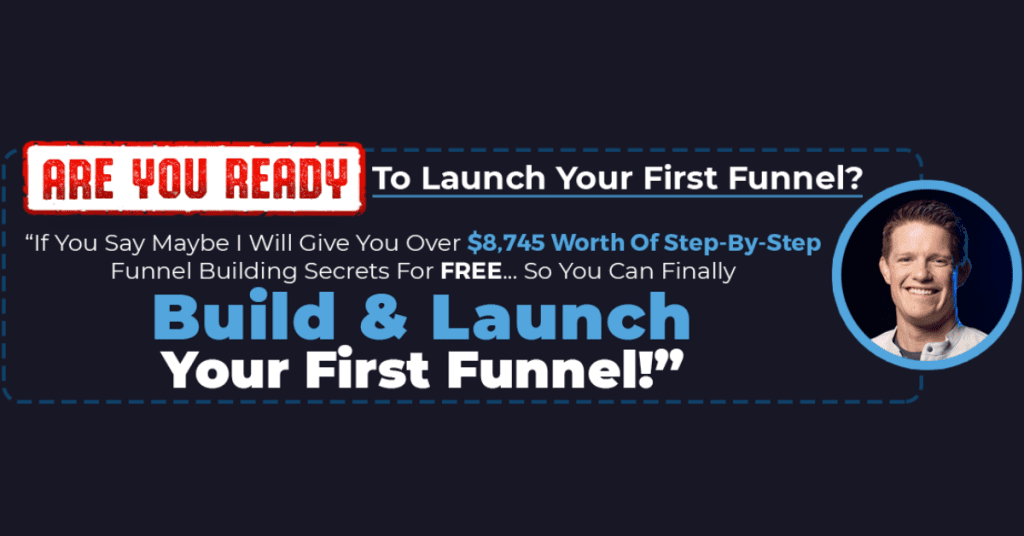Having a well-constructed marketing funnel is the secret sauce that can propel your business to new heights. If you’ve ever wondered how top-performing businesses convert curious visitors into loyal customers seamlessly, you’re in the right place.
Whether you’re a seasoned marketer looking to fine-tune your strategies or a business owner taking your first steps into the digital realm, we’ve got you covered. Get ready to explore the key principles, tools, and tactics that will empower you to design and implement a marketing funnel tailored to your unique business goals.
We’ll dive deep into the core components of a successful marketing funnel, from capturing initial interest to guiding prospects through the decision-making process.
What Is a Sales Funnel?
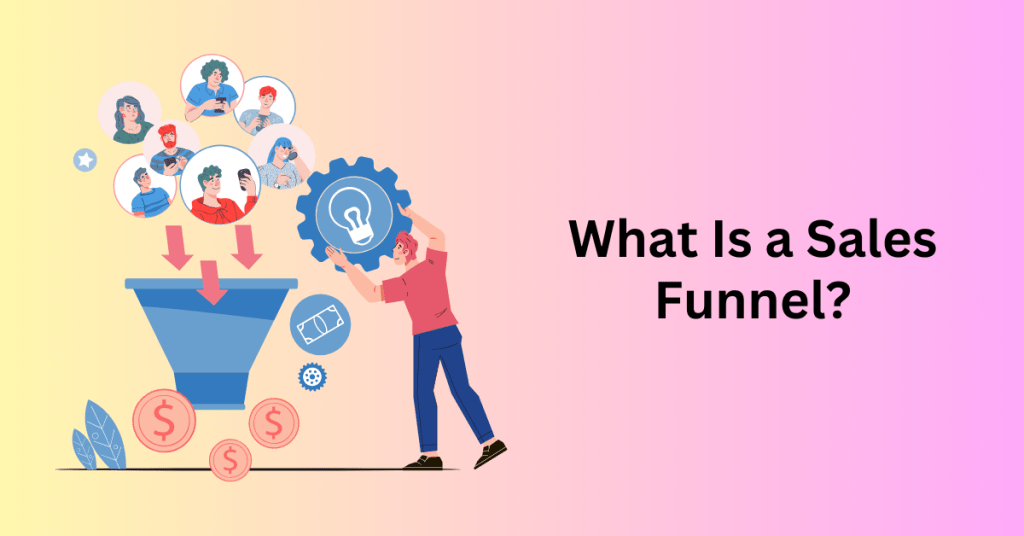
A sales funnel is a metaphorical pathway that potential customers travel through on their journey to making a purchase. It’s like guiding them from the initial point of discovering your product or service to the ultimate destination of becoming a loyal customer.
The funnel is divided into three main stages: TOFU, MOFU, and BOFU.
TOFU, or Top of the Funnel, represents the broadest part where awareness is created. This is where you capture the attention of a large audience and introduce them to your brand. It’s like the first spark of interest—perhaps through social media, blog posts, or other content that grabs their attention. This is where you find your potential customers from the broad audiences.
MOFU, or Middle of the Funnel, is the stage where the potential customers have moved beyond the initial awareness and are now considering their options. Here, you provide more targeted content addressing their needs or concerns. It’s about nurturing the relationship, building trust, and showcasing the value your product or service brings. Your potential customers are now the leads for your business.
BOFU, or Bottom of the Funnel, is where the magic happens—the conversion. At this stage, your potential customers have become well-informed and are ready to make a decision. It’s about providing them with the right incentives like special offers, demos, or testimonials, to push them towards making a purchase. The sales funnel, in essence, is a strategic approach to guide potential customers smoothly through these stages, turning curiosity into commitment. This is where they become your customers and stay as your loyal or existing customers.
Join the Free Your First Funnel Challenge Now
What is The Value Ladder Sales Funnel?
I first read about the concept of the Value Ladder sales funnel from Russell Brunson’s book, Dotcom Secrets. And it was also the basics that Russell used to build his 8-figure business.
In short, the value ladder sales funnel consists of four stages:
- Bait. You offer the potential customer your lead magnet in exchange for their email address.
- Frontend. You offer the potential customer your least expensive and least valuable product or service.
- Middle. You offer the customer a more expensive and more valuable product or service.
- Backend. You offer the customer your most expensive and most valuable product or service.
Ideally, you also offer a continuity or subscription program that generates recurring revenue. And in between the offer, you can also add downsells, upsells and cross-sells to increase your revenue.
Different Stages of Value Ladder Sales Funnel
The Value Ladder is essentially a strategic way of offering products or services at various price points. With each level, you are providing more value than the previous one. It’s like inviting customers to climb a ladder of value, ascending from lower-priced, entry-level offerings to higher-priced, premium products or services.
At the bottom rung of the ladder, you have your entry-level or introductory products. These are often priced affordably and serve as the initial point of contact with your audience. The goal here is to attract a wide range of customers and initiate a relationship. Once they’ve experienced the value of your entry-level product, they’re more likely to ascend to the next level of the ladder.
Moving up the ladder, you introduce products or services with more features, benefits, and consequently, a higher price tag. This is the middle tier, where customers who have already engaged with your brand are willing to invest more for additional value. As they climb, the relationship deepens, and your customers become more invested in what you offer.
At the top of the ladder, you have your premium offerings. These are your high-ticket items, providing the utmost value and often personalized experiences. Customers who have ascended the ladder are more likely to invest in these premium products because they trust your brand and have experienced the value you consistently deliver.
The Value Ladder Sales Funnel, therefore, becomes a systematic way of maximizing customer lifetime value. This is done by guiding them through a progression of offerings that align with their evolving needs and budgets.
Join the Free Your First Funnel Challenge Now
The Top Five Marketing Funnels to Grow Your Business
As you understand the importance of marketing funnels, it’s time to look at a few different effective marketing funnels for your business.
What Is a Marketing Funnel?
A marketing funnel is like a journey that potential customers take from the moment they first become aware of a product or service to the point of making a purchase. It’s a framework that helps businesses understand and visualize the various stages a consumer goes through before becoming a customer.
Typically, the marketing funnel is divided into several stages. Each represents a different level of engagement and interaction with the brand.
The first stage is the awareness stage, where potential customers become aware of the existence of a product or service. This can happen through various channels such as social media, advertising, or word of mouth. In this stage, you will offer freebies to your potential customers to collect their contact details.
Once awareness is established, the customer moves to the next stage—the consideration stage. In this phase, individuals are actively considering the product or service and may engage in research, comparison, and evaluation.
The final stage is the decision or conversion stage, where the potential customer decides to make a purchase. This is often the ultimate goal of the marketing funnel, and businesses employ strategies like discounts, testimonials, or limited-time offers to encourage the final conversion.
The marketing funnel provides a structured way for businesses to analyze and optimize their marketing efforts at each stage. This can ensure a smoother and more effective customer journey from awareness to conversion.
Now let’s take a look at the top five marketing funnels that can help you grow your business.
Get started with ClickFunnels Free Trial
Marketing Funnel 1: The Squeeze Page Funnel
The squeeze page funnel is one of the most used marketing funnels. It’s simple, easy to implement and highly effective.
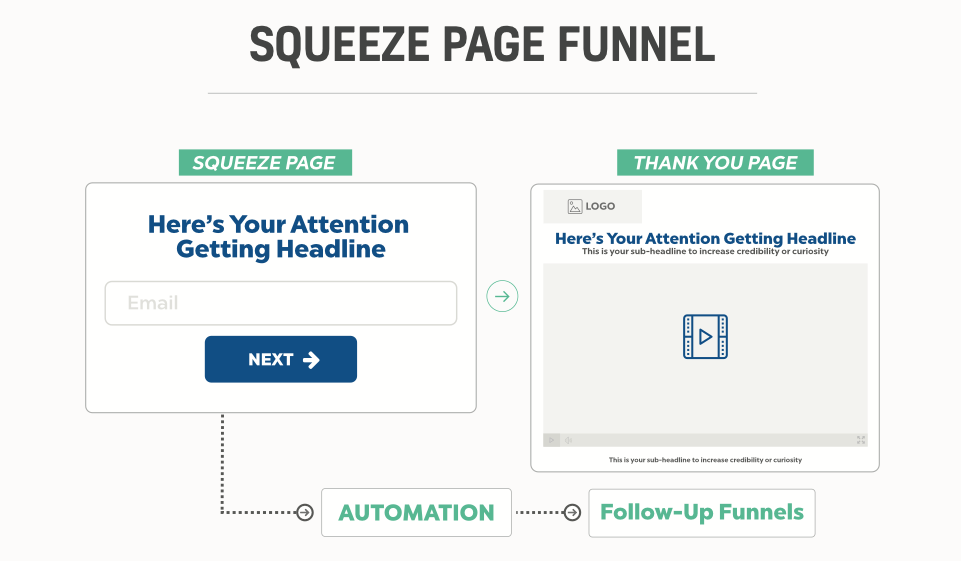
A squeeze page funnel consists of two pages. A squeeze page and a thank you page. On the first page, you are going to offer them an incentive or freebie to get them to provide you with their contact details.
This is important because you can further follow up with them and convert them after having their contact details. After they provide you with their contact details, you are going to tell them how to claim the free item on the next page. At the same time, explain what they can expect from you in the next few days. This includes whether you are going to send them follow-up emails or WhatsApp messages.
Get started with ClickFunnels Free Trial
Marketing Funnel 2: The Reverse Squeeze Page Funnel
The reverse squeeze page funnel is similar to a squeeze page funnel. Both are two steps funnel with a squeeze page and a thank you.

But what’s different is you provide some value to your potential customers even before they give you their contact details. And when they submit their contact details, they will able to unlock the full content for free.
The reverse squeeze page funnel works best for video-based lead magnets such as video masterclasses and video courses. But it can also work for text-based lead magnets such as cheatsheets, ebooks, and email courses.
Either way, you would like to talk about their struggle and problems faced in your front-end content targeting the right customers with your free content. Then, in order for them to get the solution, they will need to send you their contact details to unlock it.
You can record a 5-minute video and show the first 2 minutes on the squeeze page. Then, the remaining 3 minutes will be shown on the thank you page after they complete the sign-up.
Get started with ClickFunnels Free Trial
Marketing Funnel 3: The Survey Funnel
A survey funnel is different as it doesn’t seem like a sales page. Instead, it’s an interactive page where your potential customers will need to answer the survey question. And of course, hoping for certain results based on different answers.
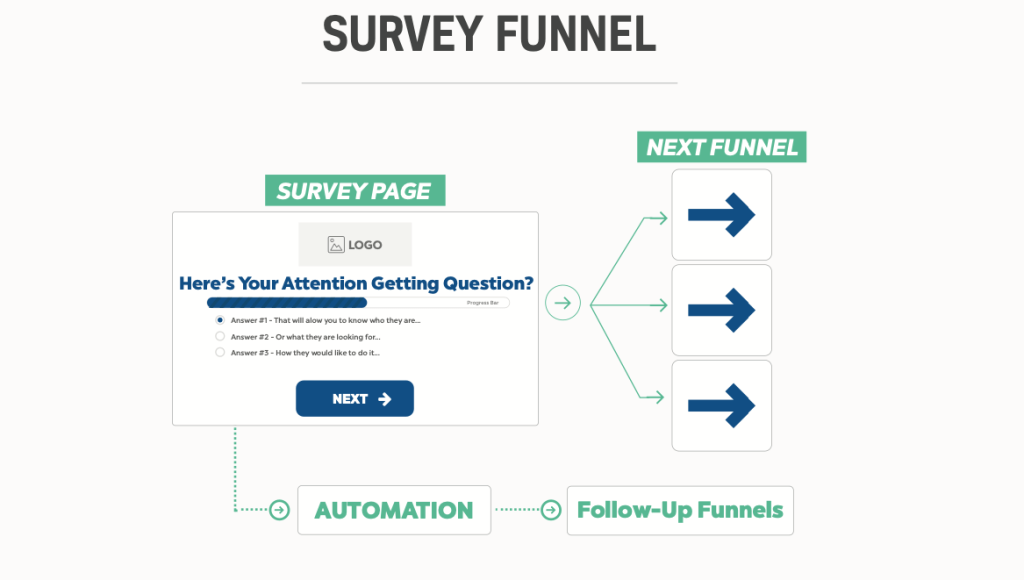
You can have a single-page survey or a multiple-page survey before a squeeze page for the survey result and another thank you page after they complete the sign-up on the survey page. You don’t need a long survey for this. A 3-4 questions survey will be sufficient to keep them engaged and curious while not taking too much effort to complete the survey.
The power of a survey is that people will expect the survey result and see if it matches their choice. At the same time, it’s a good way for you to create different survey result pages based on their survey response.
Since the goal is almost the same, you may use the same survey result page design with different explanations based on their choice. But, the result should be the same, to get them to complete certain actions.
Get started with ClickFunnels Free Trial
Marketing Funnel 4: The Product Launch Funnel
If you are selling your own product, the product launch funnel is what you can use. With the product launch funnel, you can create a pre-launch event to inform your audiences about the upcoming launch.

It’s like a new movie release where there will be different trailers and posters about the upcoming movie. It will give a hint of what coming and get people excited for the launch.
Here’s what a product launch funnel looks like. It starts with a squeeze page where you either collect emails for new visitors or a landing page to tell about what to expect in the upcoming launch. Then, followed with several pages of video to showcase the product. Next, the product order page and finally the order confirmation page when they finally complete the purchase.
This funnel is very effective for both one-time and evergreen launches. And you should run the product launch funnel within a week before the product launch date. If the gap is too long like months, it doesn’t make sense for them to wait. The hype is over for your product.
Get started with ClickFunnels Free Trial
Marketing Funnel 5: The Webinar Funnel
The webinar funnel is a marketing funnel to sell your webinar ticket. However, we are not going to make money from selling the ticket. Instead, you want to get as many tickets out for free as possible.
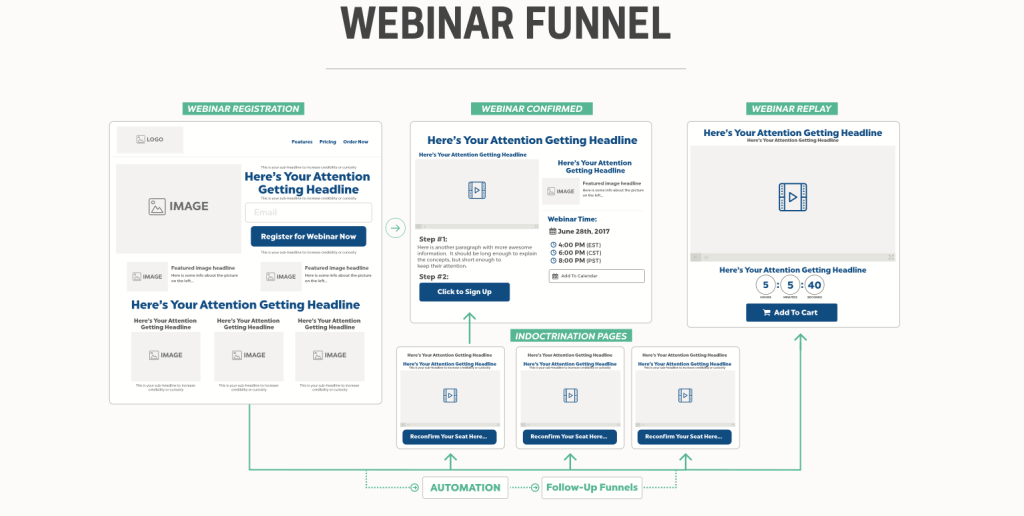
Besides, the webinar is your lead magnet to get people to subscribe to your list. And since webinars are usually seen as high-value lead magnets, people will be more likely to join the webinar.
Webinar Funnel Steps
A typical webinar funnel will consist of three pages with a follow-up funnel. The first page will be the webinar registration page where you sell your webinar ticket. And once they complete the registration, you send them to the thank you page. This is where you will explain what to expect in the webinar and how to prepare for the webinar.
It can be joining a Facebook group dedicated to the event, or adding the event to their calendar. In addition, you can tell that you are sending them emails to explain more about the webinar.
The final step in the webinar will be your webinar page where you will deliver the webinar. In between the thank you page and webinar page, the follow-up funnel is the email sequence. You send out emails periodically to get them interested in the webinar and persuade them to join the webinar on time.
In your webinar, you need to focus on providing value to the participants. Don’t rush to sell during the webinar. When you provide enough value in the webinar, they will trust you and buy from you.
At the end of the webinar, you can ask them to buy immediately with a time-limited offer or a free 30-minute consultation session to qualify them to work with you. This will add another premium to your offer. And of course, those who book the free consultation session are most likely to buy from you.
After you have the webinar funnel built, you can run it all the time. The difference will be how you organize the webinar. You can either run it live or play a recorded webinar too. You will be soon addicted to running webinars when you see the results they bring.
Join the Free Your First Funnel Challenge Now
How to Build a Squeeze Page Funnel in 3 Easy Steps
Since the squeeze page funnel is the basis of all these funnels, let’s start with building a squeeze page funnel. Don’t worry if this is your first time and you do not have any technical skills, I can assure you that if you follow our guide step by step, you too can build one after this.
Step 1: Create a High-Value Lead Magnet
A lead magnet is a freebie that you offer to your potential customer in exchange for their email address. The key to a lead magnet is to have a high perceived value. It shall be something that can provide instant value for your potential customers.

For instance, it can be a text-based lead magnet like a cheatsheet, step-by-step guide or course. In your lead magnet, it is most important that you can provide an effective solution to the problem your customer is struggling with.
Also, the solution you provide in the lead magnet can instantly address their issue. This is the most effective way for them to feel irresistible and get your lead magnet.
When you create your lead magnet, it should be something that is related to your frontend offer where they will get more premium content or more effective solutions from the paid offer.
The ultimate secret of a successful lead magnet is to make it irresistible for your potential customer to raise their hand and fight to get it. And of course, a free lead magnet always works best.
Step 2: Create a Landing Page for Your Lead Magnet
Now that you have your lead magnet ready, it’s time to build your squeeze page. For this, we will be using the ClickFunnels.
ClickFunnels is one of the best sales funnel builders out there. To start, ClickFunnels provides different templates for building the squeeze page and the thank you page for your squeeze funnel.
Get started with ClickFunnels Free Trial
All you need to do is select the template that suits your branding and industry, then modify the content to match your business.
For your landing page, it should consist of five basic elements. Your eye-catching title, image or video to explain your lead magnet, short sales letter, contact form and CTA button. In addition to that, you can also have different sections like testimonials, and long-form sales letters to explain your lead magnet.
In your thank you page, you will need two elements. A short video to explain how they can get the lead magnet and what they can expect to receive after signing up for your mailing list.
After building your squeeze funnel, test it out thoroughly to ensure that every element and button works as it should.
Get started with ClickFunnels Free Trial
Step 3: Create a Welcome Email Sequence
For someone who just subscribes to your email list, they don’t know about you at this time. Their resistance is still very high. So, never try to hit them with a sales pitch in the first email.
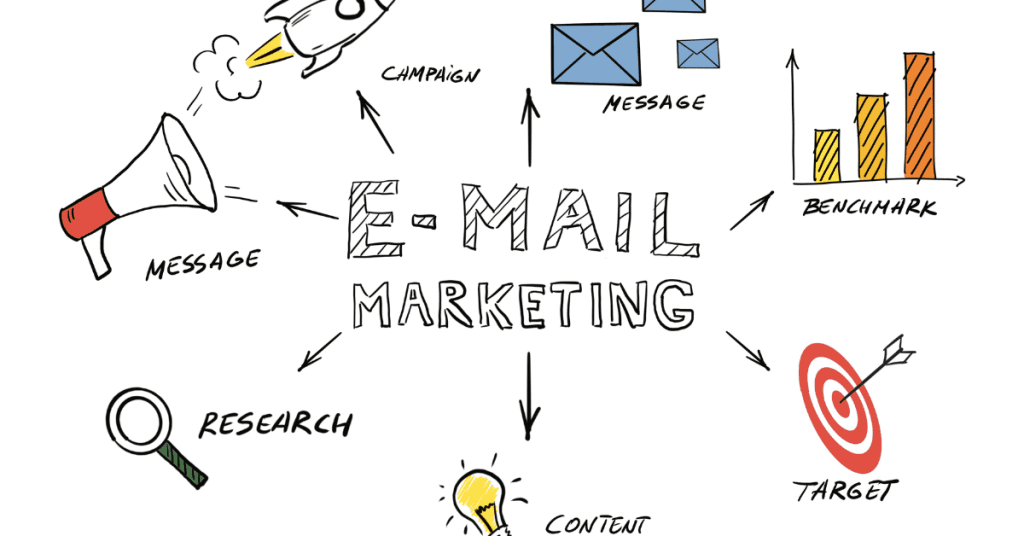
Instead, you should build your stage and trust with them first before pitching anything. This will lower the resistance level and more likely for them to listen to your pitch.
This is how you should design your welcome email sequence.
Email 1: Explain who you are and why should they listen to you.
Email 2: Share your backstory. A story that they can relate to where you show them that you were at their stage previously. This is to make it easier for them to feel relatable.
Email 3: Explain more about what you do and how you are capable of what you say you know.
Email 4: In this stage, you can start to explain why they should listen to you. This can include any qualifications, or credentials that you achieve in your journey
Email 5: Share your case study of your previous customers who bought the product or service from you and achieved the result they wanted.
Email 6: In this final email, it’s time to pitch your products and services. Please show them your best offer and persuade them to complete the purchase.
Each of your emails should be chained together and your audiences will keep looking forward to the email the next day. And also, encourage them to reply to your email to create interaction. Always reply to their email as soon as possible so your audiences will feel appreciated.
Join the Free Your First Funnel Challenge Now
Tips To Increase Your Marketing Funnel Conversion Rate
Creating the sales funnel is the first step, it is easy with the sales funnel builder software. Anyone can build the marketing funnel in no time. However, what makes the difference is the conversion rate of the marketing funnel. Let’s go through some tips to increase your marketing funnel conversion rate.
1. Compelling Headline & Subheadline
Your headline is the first thing your potential customers see when they visit your landing page. If they feel that it’s not attractive, they will leave without reading your copy.
Hence, in your headline and subheadline, you need to hook them to get them to continue exploring your content. And since the headline should be short, concise and eye-catching, you will complement it with a subheadline to provide more information about your free offer.
However, you should not reveal everything too fast in your headline and subheadline as you want to leave some curiosity for them to keep scrolling and reading.
Make sure to mention that it’s free if you are offering a free offer. That’s one of your key selling points.
2. Use Your CTA Properly
While the CTA is important for your landing page to get people to click and complete the form submission, you shouldn’t overuse it. CTA can come in different forms like a button, banner or pop-up.
If you are using a pop-up, make sure that it’s not appearing too often and disturb your customers from reading your content. Position your CTA prominently on the landing page, ensuring it’s easily visible without the need for excessive scrolling. A common approach is to place the CTA above the fold, where users first land on the page, to capture attention immediately. Additionally, use contrasting colours that stand out against the background to draw focus to the CTA button.
Furthermore, optimize the CTA’s design to enhance user experience. The button should be large enough to be easily clickable on both desktop and mobile devices. Incorporate whitespace around the CTA to prevent visual clutter and guide the user’s attention. A well-designed and strategically placed CTA, combined with persuasive messaging, can significantly improve the conversion rate of your landing page.
Finally, don’t use a generic CTA like “Learn more” or “Read More. You should consider using action verbs that prompt immediate response, such as “Get Started Now” or “Claim Your Free Trial.”
3. Display Social Proof
Displaying social proof on a landing page is a powerful strategy to build trust and credibility among potential customers. Social proof refers to evidence that others have had a positive experience with your product, service, or brand.
One effective way to showcase social proof is through customer testimonials. Include testimonials that highlight specific benefits or outcomes, and whenever possible, use real names and photos to add authenticity. Additionally, consider incorporating case studies or success stories that delve into the journey of satisfied customers, emphasizing the positive impact your offering has had on their lives or businesses.
Another impactful way to leverage social proof is by displaying logos of reputable clients, partnerships, or media outlets that have featured or endorsed your product. Logos from well-known companies or positive mentions in the media can instantly elevate the perceived trustworthiness of your brand. Place these logos strategically on the landing page, especially near the Call to Action (CTA), to reinforce credibility right before users make a decision.
Lastly, integrate user-generated content, such as reviews and ratings, prominently on the landing page. Whether sourced from third-party review platforms or collected directly on your site, genuine feedback from other customers can significantly influence the decision-making process. Use a visually appealing format, like a testimonial carousel or a review widget, to make the social proof easily digestible for visitors.
By incorporating these elements, you can create a landing page that not only informs but also persuades potential customers through the powerful influence of social proof.
Join the Free Your First Funnel Challenge Now
Final Thoughts – Build Your First Marketing Funnel in Just Five Days!
While it seems easy to start and build your first marketing funnel, there are a lot of other things that you need to optimize to create your successful marketing funnel.
So, instead of working all on your own, we are offering a five-day FREE challenge to help you get started. In the challenge, you will learn about lead magnet creation, marketing funnel creation, lead generation, email sequence creation and how to get traffic for your landing page.
All within the free five-day challenge. Not only that, there are special guests invited to share their insights to build not only a successful marketing funnel but also businesses.
